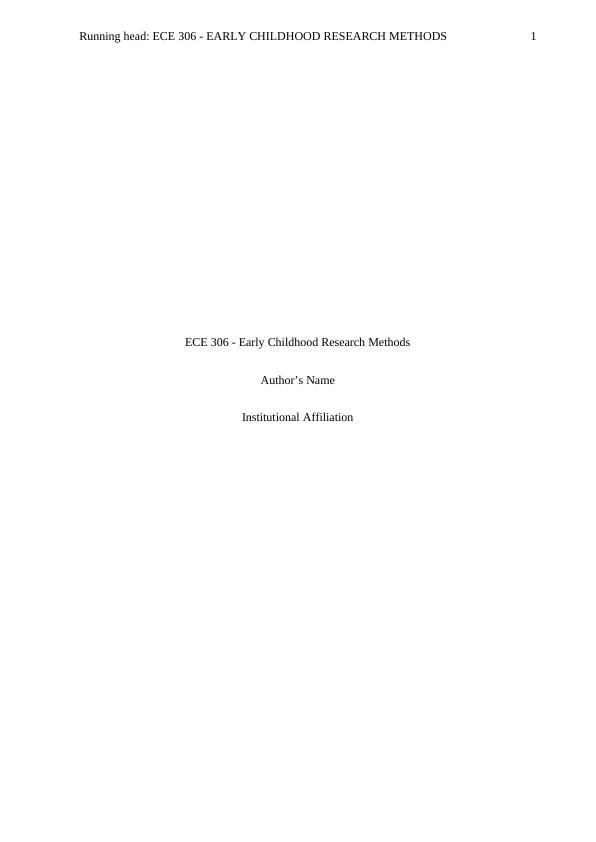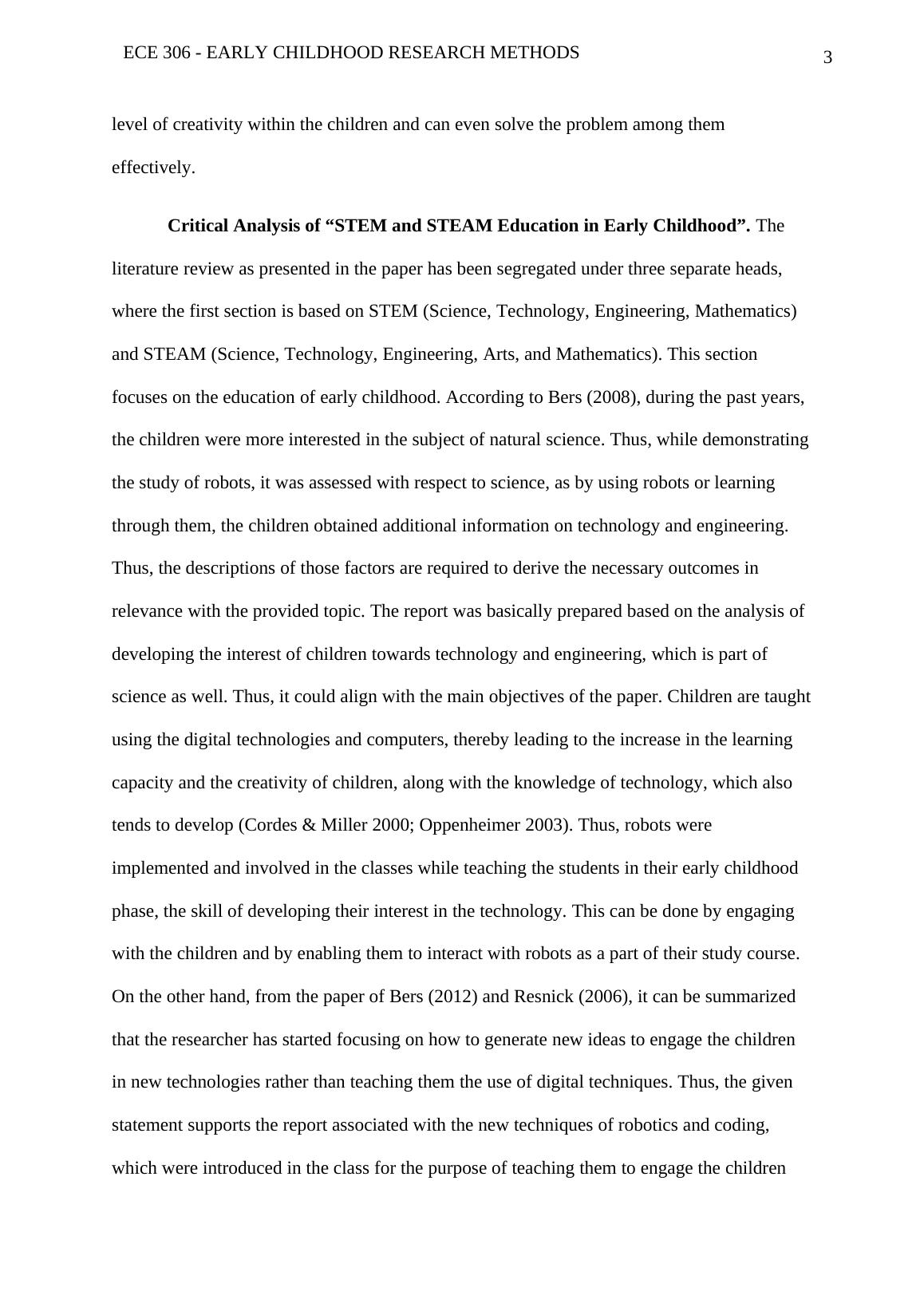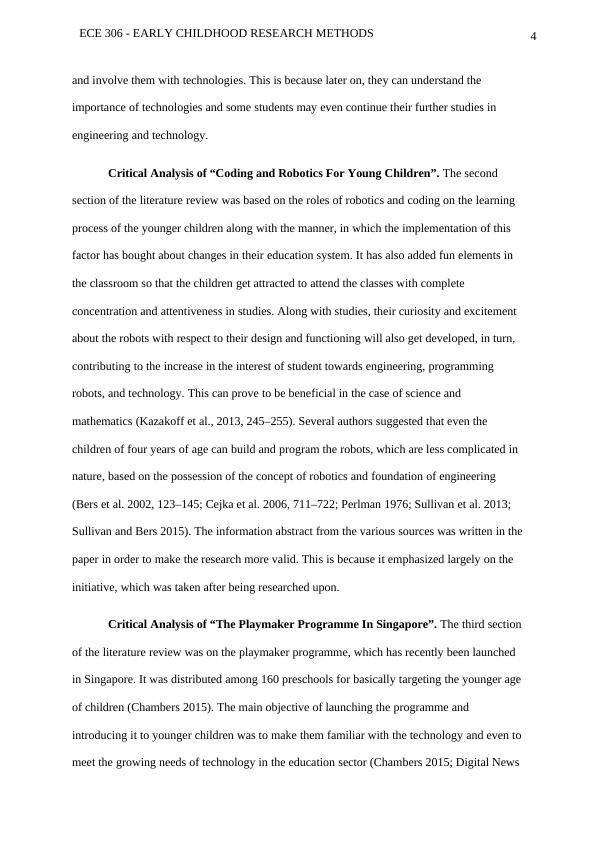Early Childhood Research Methods l Assignment
This assignment requires a critical analysis of a research report on integrating art, music, and robotics in Singapore's early childhood centers, focusing on the alignment of the literature review, appropriateness of sampling and data collection methods, extent of findings addressing research questions, and limitations of the study. Additionally, a small-scale, classroom-based early childhood applied project needs to be designed based on the critique and relevant literature.
Added on 2022-09-18
Early Childhood Research Methods l Assignment
This assignment requires a critical analysis of a research report on integrating art, music, and robotics in Singapore's early childhood centers, focusing on the alignment of the literature review, appropriateness of sampling and data collection methods, extent of findings addressing research questions, and limitations of the study. Additionally, a small-scale, classroom-based early childhood applied project needs to be designed based on the critique and relevant literature.
Added on 2022-09-18
End of preview
Want to access all the pages? Upload your documents or become a member.




